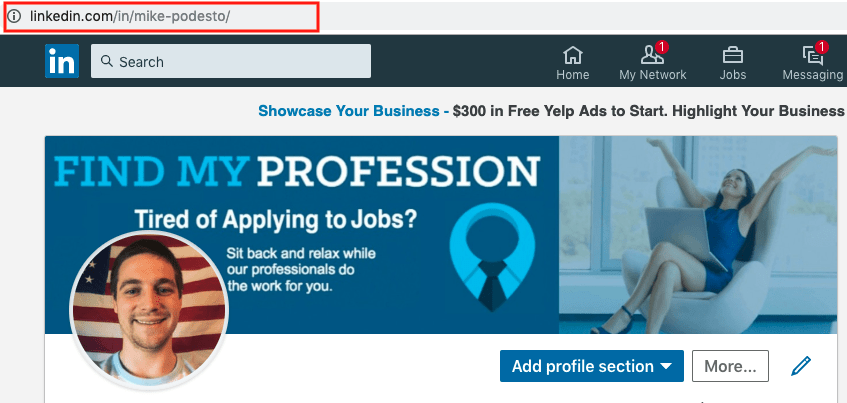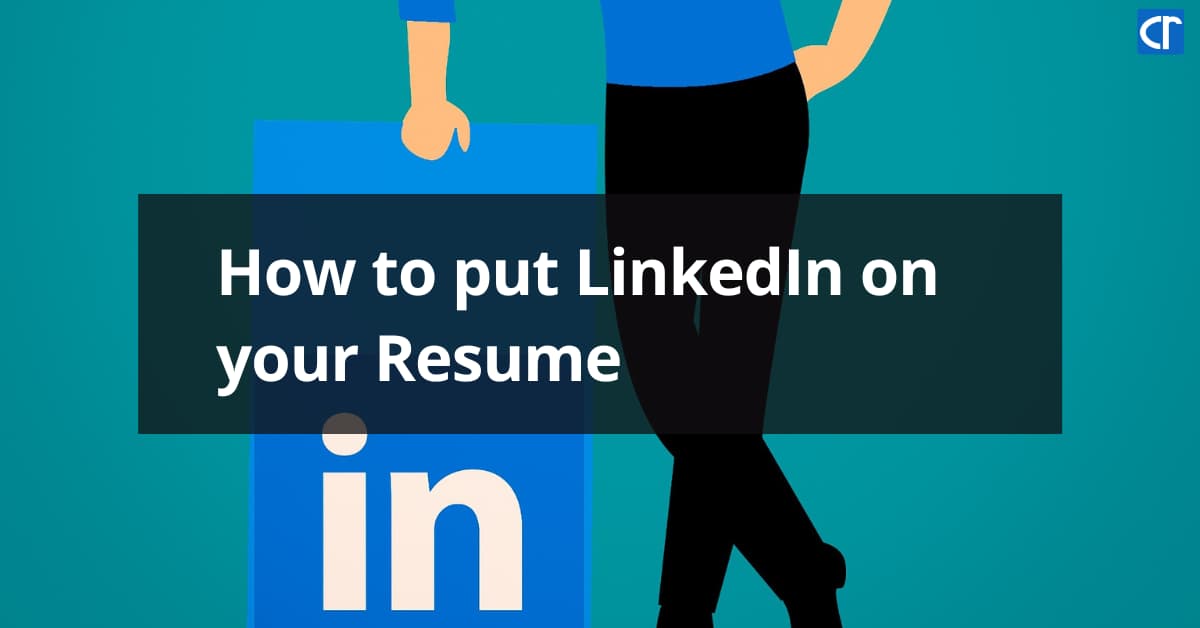In today’s digital age, your resume is more than just a piece of paper; it’s a gateway to your professional identity. One crucial way to enhance this identity is by linking your LinkedIn profile to your resume. This simple step can elevate your job applications and help potential employers see the full picture of who you are. Let’s dive into why this link matters and how it can create maximum impact.
Why Linking Your LinkedIn Profile is Important

Linking your LinkedIn profile to your resume isn't just a trendy move; it's a strategic one. Here are a few compelling reasons to consider:
- Showcase Your Professional Story: Your LinkedIn profile allows you to present a more dynamic view of your professional journey. Unlike a traditional resume, which is often limited in space, LinkedIn gives you the freedom to elaborate on your skills, experiences, and achievements. By linking it, you're inviting employers to explore the full depth of your capabilities.
- Demonstrate Your Online Presence: In today’s job market, having a strong online presence is essential. A linked LinkedIn profile signals to recruiters that you're engaged and active in your field. They can see your interactions, endorsements, and even your networking efforts, which can all bolster your candidacy.
- Keep Information Updated: Resumes can quickly become outdated, especially if you’re continuously developing your skills or changing jobs. By linking to your LinkedIn, you allow employers to access the most current information about your professional life. It saves you the hassle of constantly updating multiple documents.
- Enhance Your Credibility: LinkedIn profiles often include recommendations from colleagues or supervisors, which can add a level of credibility to your application. When employers see positive testimonials about your work ethic and skills, it can reinforce their interest in you as a candidate.
- Stand Out in a Competitive Market: Many job seekers overlook this simple yet effective strategy. By linking your LinkedIn profile, you set yourself apart from others who may not take this extra step. It demonstrates that you're proactive and understand the importance of personal branding.
In summary, linking your LinkedIn profile to your resume is a powerful way to enhance your professional presentation. It not only showcases your qualifications but also illustrates your commitment to staying relevant in your career. So, next time you update your resume, don’t forget to add that crucial link! Your future self will thank you.
Also Read This: How to Cancel LinkedIn Sales Navigator Subscription
3. Steps to Effectively Link Your LinkedIn Profile to Your Resume

Linking your LinkedIn profile to your resume is like adding a cherry on top of your job application sundae! Here’s how to do it effectively:
- Choose the Right Format: Decide where to place your LinkedIn link. A popular choice is the header section of your resume, right under your name and contact information. This way, it’s one of the first things a recruiter sees!
- Customize Your LinkedIn URL: Make your profile link look neat and professional. You can customize your LinkedIn URL in your profile settings to something like linkedin.com/in/yourname. This makes it easy to remember and looks better on your resume.
- Add a Hyperlink (if digital): If you’re sending your resume via email or through an online application, hyperlink your LinkedIn URL. For example, you could format it like this: My LinkedIn Profile. This makes it easy for recruiters to click through.
- Highlight Your Best Features: When linking your LinkedIn, make sure it complements your resume. Tailor your LinkedIn profile so it showcases skills, experiences, or accomplishments that aren’t in your resume. This adds depth to your application!
- Test the Link: Before sending out your resume, test the link to ensure it directs to the right profile. There’s nothing worse than a broken link!
By following these steps, you’ll create a seamless connection between your resume and your LinkedIn profile, making it easier for hiring managers to see the full picture of your professional background.
Also Read This: Is LinkedIn Easy Apply Worth Using? A Guide for Job Seekers
4. Best Practices for Including LinkedIn in Your Resume

Including your LinkedIn profile can enhance your resume, but it’s essential to do it right. Here are some best practices to keep in mind:
- Keep It Professional: Ensure your LinkedIn profile is up-to-date and reflects your best professional self. This means a polished photo, a strong headline, and a detailed summary. Your LinkedIn should be an extension of your resume, not a different story!
- Use Keywords: Incorporate industry-specific keywords in both your resume and LinkedIn profile. This helps in passing through Applicant Tracking Systems (ATS) and also makes your profile more searchable on LinkedIn.
- Align Your Content: The information on your LinkedIn shouldn’t contradict your resume. If your resume mentions a skill, ensure it’s also highlighted in your LinkedIn profile. Consistency is key!
- Showcase Recommendations: If you have recommendations on your LinkedIn profile, mention them subtly in your resume. For instance, you can add a line that states, "Endorsed by colleagues for exceptional teamwork and leadership". This adds credibility!
- Update Regularly: As your career progresses, update both your resume and LinkedIn profile. Whenever you gain new skills or experiences, reflect that in both places. This ensures recruiters see the most current version of you!
By adhering to these best practices, you’ll not only enhance your resume but also create a strong, professional presence across platforms, making you a standout candidate.
Also Read This: How to Professionally Message a Recruiter on LinkedIn After Applying
5. Common Mistakes to Avoid
When linking your LinkedIn profile to your resume, it’s essential to do it right. Here are some common pitfalls to steer clear of:
- Neglecting Privacy Settings: Before you share your LinkedIn link, ensure your profile is public. If your settings are too restrictive, potential employers may not see your impressive endorsements and recommendations.
- Inconsistent Branding: Your resume and LinkedIn should tell a cohesive story. If your resume highlights certain skills or experiences that aren’t reflected in your LinkedIn profile, it could raise a red flag. Keep your branding, tone, and even formatting consistent.
- Outdated Information: Always update your LinkedIn before linking it to your resume. An outdated profile can mislead employers. For example, if you recently completed a certification or changed jobs, reflect those changes in both places promptly.
- Ignoring Keywords: Tailor your LinkedIn profile with industry-specific keywords that match your resume. Failing to do so might prevent your profile from showing up in recruiter searches. For instance, if you're applying for a digital marketing position, include keywords like "SEO," "content strategy," and "data analytics."
- Overlooking the Summary Section: Your summary on LinkedIn is a chance to showcase your personality. If it’s bland or generic, it might not attract attention. Use this space to tell your story, highlighting what makes you unique.
By avoiding these common mistakes, you can ensure that your LinkedIn profile enhances, rather than detracts from, your resume.
6. Real-Life Examples of Successful Integrations
Seeing how others effectively link their LinkedIn profiles to their resumes can provide valuable insights. Here are a couple of real-life examples of professionals who nailed this integration:
Example 1: Marketing Manager
Jane, a marketing manager, included her LinkedIn URL at the top of her resume. She ensured her profile was aligned with her resume, showcasing her achievements in digital marketing campaigns. When potential employers reviewed her LinkedIn, they found:
- Endorsements from colleagues highlighting her skills in content creation and social media strategy.
- A detailed description of her past roles, including metrics like a 30% increase in engagement from a campaign she led.
This cohesive presentation made her an appealing candidate, demonstrating both her experience and the endorsements to back it up.
Example 2: Software Engineer
Mark, a software engineer, took a different approach. He included a QR code linking directly to his LinkedIn profile in the contact section of his resume. His LinkedIn was polished, featuring:
- Project highlights with links to his GitHub, showcasing his coding skills.
- Recommendations from former managers praising his problem-solving abilities and collaborative spirit.
This innovative link not only saved space on his resume but also made it incredibly easy for recruiters to check out his work and endorsements.
These examples illustrate that a well-integrated LinkedIn profile can significantly enhance your resume’s impact, making you stand out in a competitive job market. By learning from these strategies, you can craft a compelling professional narrative that resonates with potential employers.
 admin
admin








